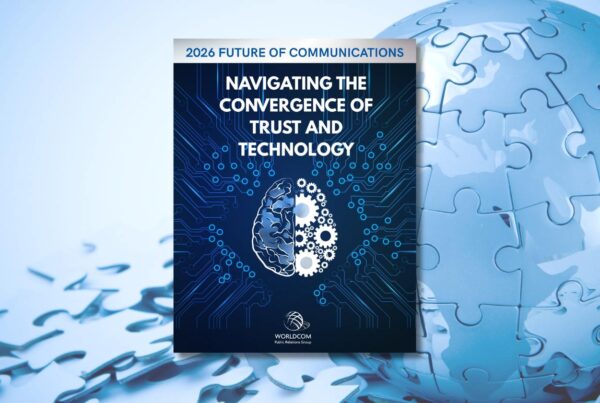By Dan Ahern
AI fatigue is a legitimate concern everywhere. According to a Forbes Advisor survey, over 40% of business owners are concerned about an over-dependence on technology due to AI use. However, when used correctly, AI isn’t just a tool – it’s a creative ally.
That said, PR and communications professionals must remain steadfast in our goal to embrace this new learning process. AI is changing the way professionals pitch the media and can be a valuable tool when implemented properly. Its true value does not lie in its usage. Rather, it is in how we use it—complementing human insight and expertise—that is when AI becomes a potent tool. It has already revolutionized the way professionals approach media pitching, not as a replacement, but as an enhancement. Let’s break it down.
Go Beyond ChatGPT: Expand Your AI Toolbox
AI can lend a helping hand at every step of the process of pitching journalists, as long as professionals don’t allow AI to have full creative control and blindly copy and paste its result.
Some of the most popular and useful “generative” platforms include ChatGPT, Gemini, and Jasper. There are also new PR-specific platforms on the market like PRophet and Prowly, which have been designed specifically to create content to drive enhanced earned media results, but they come at higher price points.
While it would be a dream to have unlimited access to every AI content creation platform, we recommend putting the time and due diligence into researching which AI platforms best suit a particular essential job function and which will provide the most impact, value, and efficiency.
It can only make you a better professional if you actively test and play with a mix of different AI platform(s), including ones optimized for certain activities like media relations. For example, I recently asked ChatGPT to edit a pitch I had written offering our client’s CEO to speak as a thought leader on industry-specific topics. ChatGPT’s training only dates back to April 2023, so once I had reviewed and updated the ChatGPT version of the pitch, I repeated the process in Gemini, which brought even more ideas to the table with the platform’s more timely training dating back to July 2023.
Take a Dose of AI to Cure Your Writer’s Block
When you’re sitting at the drawing board and the proverbial gears just aren’t turning, you can ask AI to help brainstorm outreach angles. Whether it be for a specific campaign or product, or a general thought leadership pitch to promote research or insights, AI can be a partner in determining how to create an appropriate lead for your pitch and what components are the most newsworthy.
For instance, imagine you launch a new health app designed to streamline patient-doctor communication. AI can be asked to analyze the current trends and suggest pitch angles that emphasize the app’s role in the recent surge of telehealth adoption, aligning the product with a hot topic in healthcare news. It can even propose sample email subject lines like “How [App Name] is Redefining Doctor-Patient Interactions in the Telehealth Boom.”
This is not to suggest that AI can or even should do all the brainstorming work. To get the best results, regardless of a preferred platform, professionals will need to carefully curate prompts with as much background information as possible about the product, service, company, campaign, or individuals that you’re pitching. Be crystal clear and detailed about the purpose and objectives.
The Write Start (Disclaimer: This Title was AI-Generated)
In the writing stage, AI can certainly be used for “thought starters” to make the writing process more efficient. Generative AI platforms can be asked to produce a pitch, from an outline, to get the juices flowing. The outline should clearly instruct the AI on the intended structure of the pitch and the desired end results and outcomes, along with all the pertinent details that can be shared without betraying any confidential data or information.
To help a pitch truly stand out, encourage the AI to personalize the pitch by providing it information about a specific reporter’s coverage, beat, and recent headlines so the pitch fits them individually.
However, I’ve found that results almost always need to be heavily altered and tailored to meet your needs. AI can relay information, but it often lacks the nuance and persuasive flair needed to truly captivate attention. For example, AI might deliver a straightforward statement like “This platform improves financial literacy among millennials.” But why is this important? Are millennials struggling with financial literacy? Why is this worth writing a story about? These are all questions that require real storytelling expertise. To get the best results, keep asking the AI why, until you have exhausted it by asking it why.
Ready to elevate your media pitching strategy? Don’t let AI be an afterthought. Harness its power to enhance your expertise and watch it transform your approach to communication. AI isn’t the future; it’s the present, and it’s time to make it part of your success story. AI can’t write a pitch alone. You can. But AI is built to make the process of writing more effective and efficient. It is a long journey, and we are just at the beginning, although it feels like we are travelling at warp speed; just make sure to never stop exploring ways to use AI to create a compelling and competitive advantage.
Here is a recap of some tips to guide your exploration:
- Curate Your AI: Not all AI platforms are created equal. Identify and utilize the AI tools best suited to your specific needs in media pitching. Look for platforms that allow for customization and can adapt to your unique communication style.
- Marry AI with Human Expertise: Use AI to handle data-heavy tasks and initial drafting. Add professional insight and a personal touch to ensure each pitch resonates with its intended audience. Remember, AI is your assistant, not your ghostwriter.
- Continuous Learning and Adaptation: Stay current with AI advancements and continually update your strategies. AI evolves rapidly; make sure you do, too. This ensures that your media pitching methods remain innovative and effective.
- Experiment with AI Capabilities: Don’t shy away from using AI for different aspects of media pitching, including research, trend analysis, content creation, and even follow-up engagement. The more you experiment, the better you can leverage AI’s full potential.






